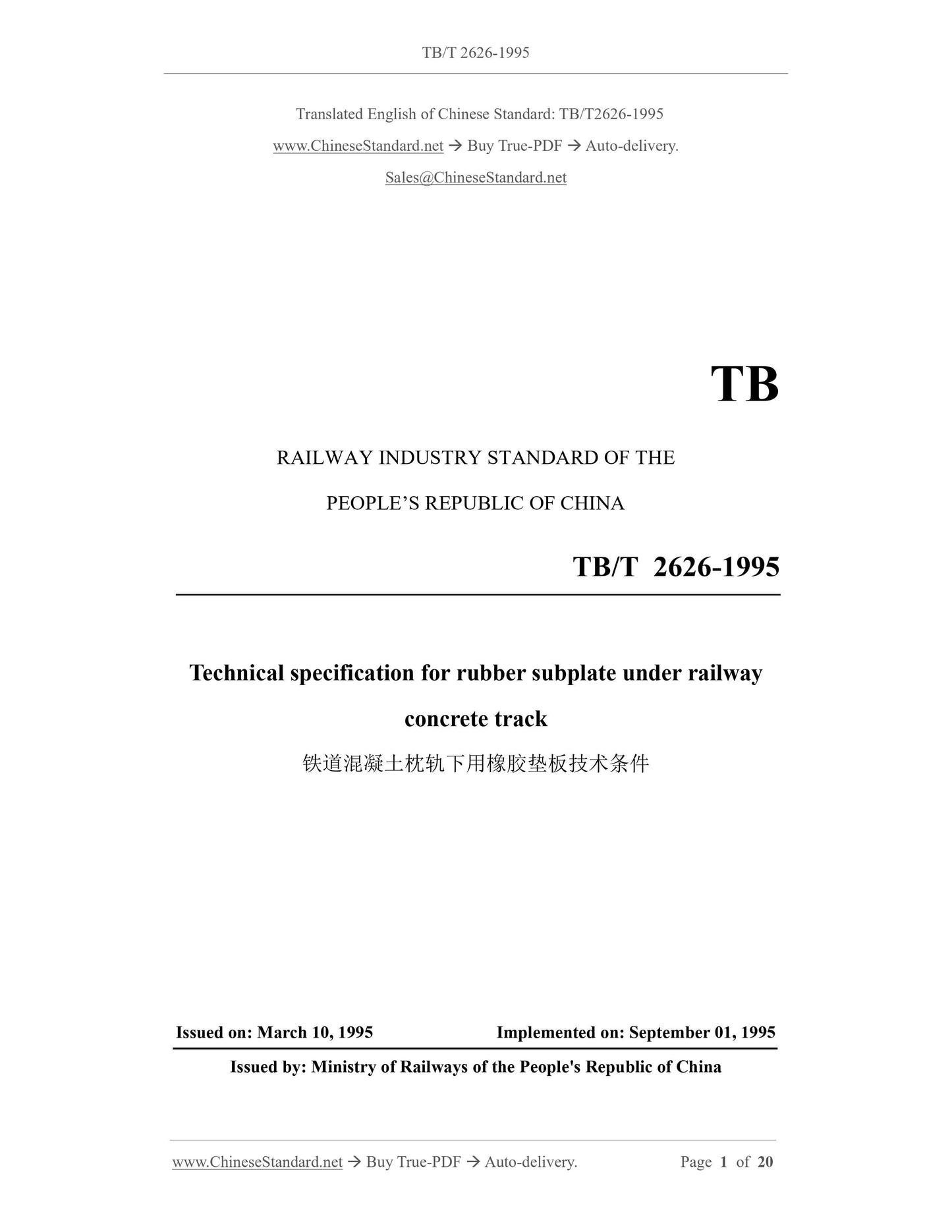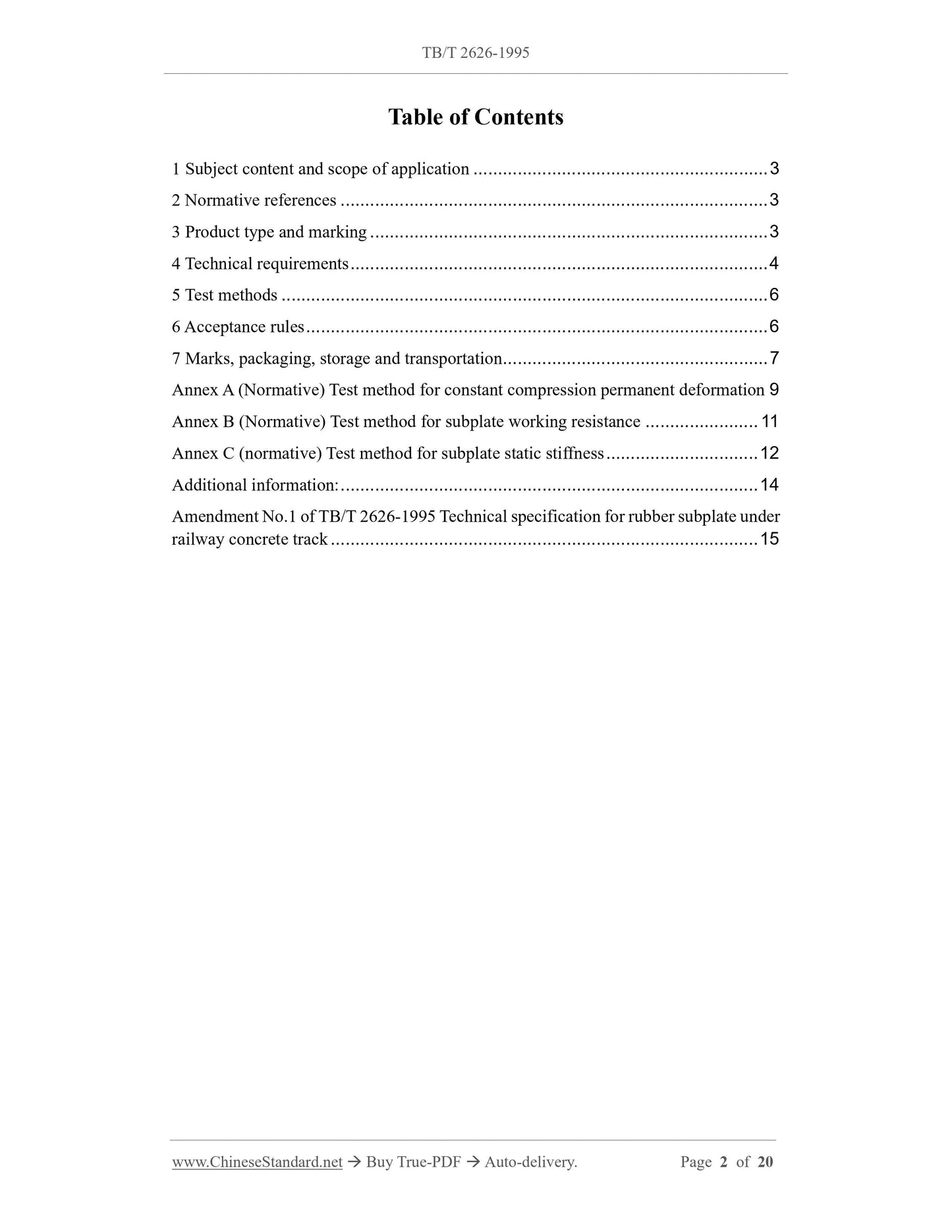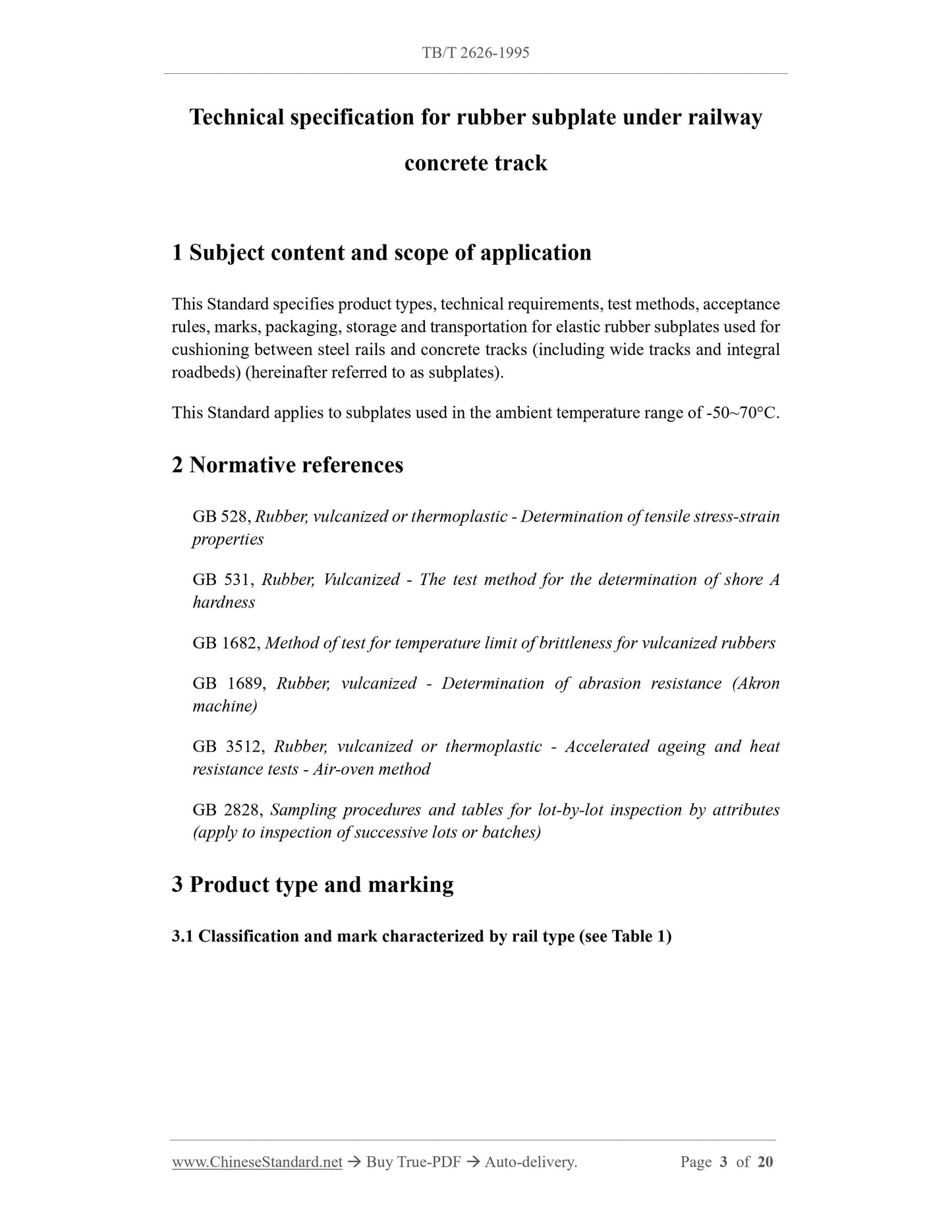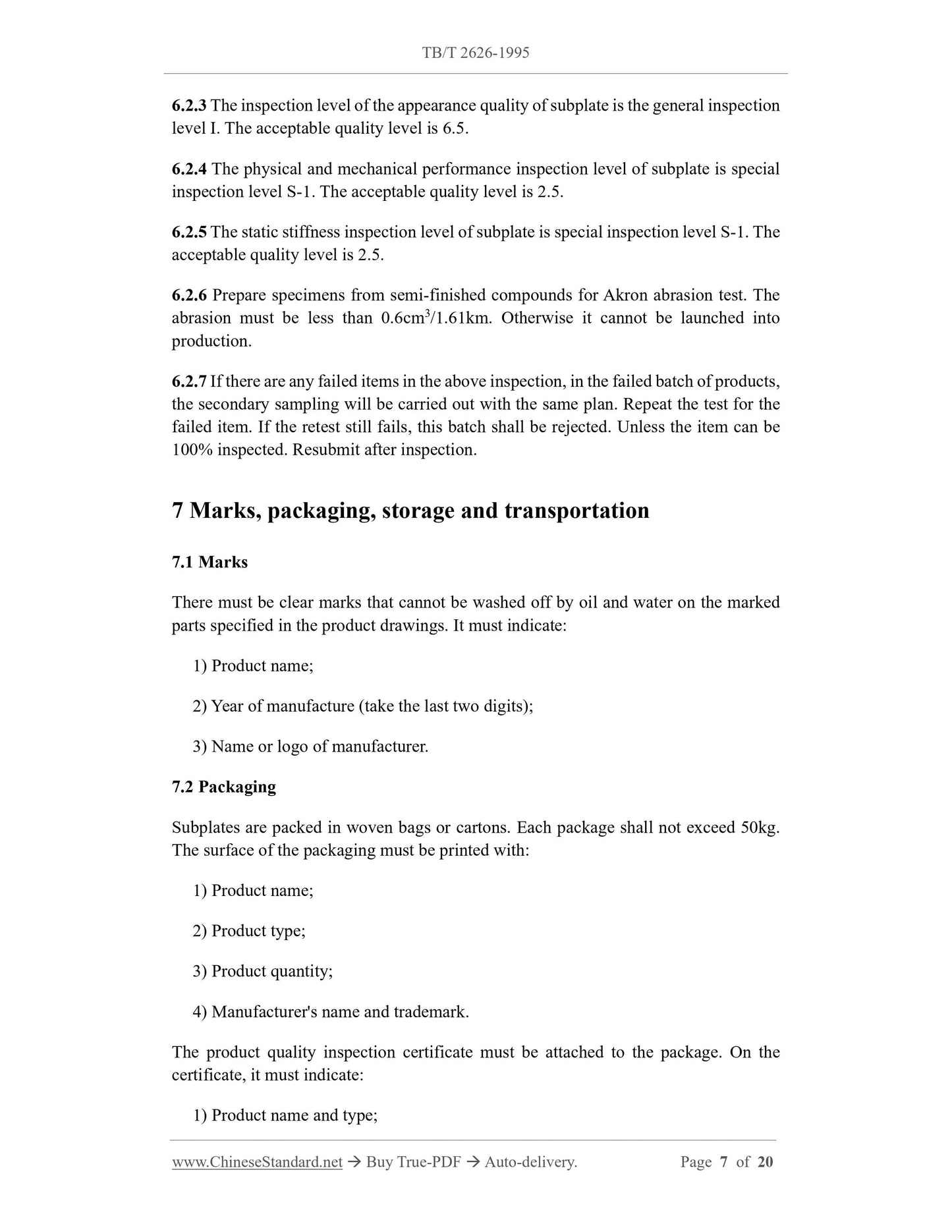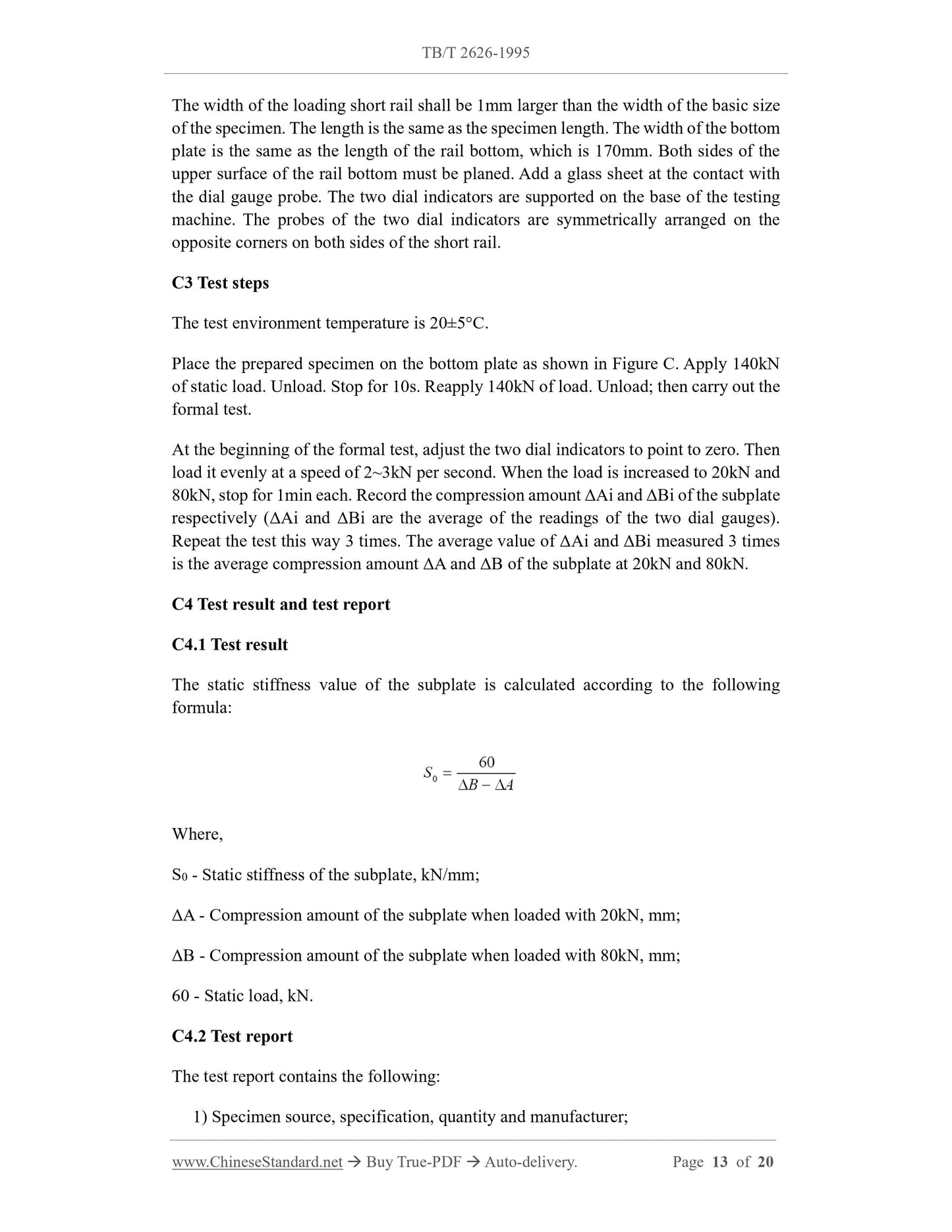1
/
of
5
www.ChineseStandard.us -- Field Test Asia Pte. Ltd.
TB/T 2626-1995 English PDF (TB/T2626-1995)
TB/T 2626-1995 English PDF (TB/T2626-1995)
Regular price
$395.00
Regular price
Sale price
$395.00
Unit price
/
per
Shipping calculated at checkout.
Couldn't load pickup availability
TB/T 2626-1995: Technical specification for rubber subplate under railway concrete track
Delivery: 9 seconds. Download (and Email) true-PDF + Invoice.Get Quotation: Click TB/T 2626-1995 (Self-service in 1-minute)
Newer / historical versions: TB/T 2626-1995
Preview True-PDF
Scope
This Standard specifies product types, technical requirements, test methods, acceptancerules, marks, packaging, storage and transportation for elastic rubber subplates used for
cushioning between steel rails and concrete tracks (including wide tracks and integral
roadbeds) (hereinafter referred to as subplates).
This Standard applies to subplates used in the ambient temperature range of -50~70°C.
Basic Data
| Standard ID | TB/T 2626-1995 (TB/T2626-1995) |
| Description (Translated English) | Technical specification for rubber subplate under railway concrete track |
| Sector / Industry | Railway and Train Industry Standard (Recommended) |
| Classification of Chinese Standard | S11;G47 |
| Word Count Estimation | 10,117 |
| Date of Issue | 3/10/1995 |
| Date of Implementation | 9/1/1995 |
| Quoted Standard | GB 528; GB 531; GB 1682; GB 1689; GB 3512; GB 2828 |
| Adopted Standard | UIC 864, NEQ; JIS E1-117, NEQ |
| Summary | This standard specifies between rail and concrete sleepers for the dampening effect of the elastic rubber pad type of product, technical requirements, test methods, inspection rules, marking, packaging, storage and transportation. This standard applies to the pad in an ambient temperature range of -50 ~ 70 �� use. |
Share
